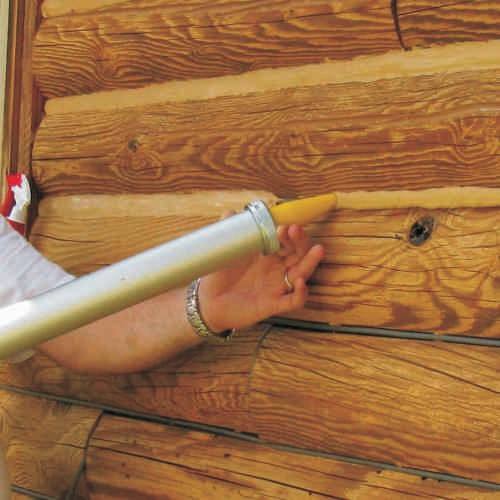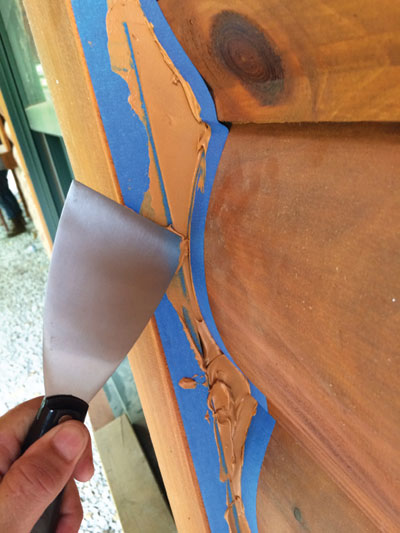 When applying any of our sealants in cold weather there are two main factors to consider, the temperature of the logs and the temperature of the product. As long as the logs are dry and not frozen, any of our sealants can be applied to them without comprising appearance or performance.
When applying any of our sealants in cold weather there are two main factors to consider, the temperature of the logs and the temperature of the product. As long as the logs are dry and not frozen, any of our sealants can be applied to them without comprising appearance or performance.
The problem associated with very cold sealants is viscosity, their viscosity increases as the temperature decreases. In other words, they become thicker. This is especially apparent when trying to squeeze product out of an 11 ounce or 30 ounce tube or when attempting to load a bulk loading gun from a pail of sealant. Cold product is also more difficult to tool. It's always best to store our sealants in a controlled environment (50-70oF), they will be a lot easier to apply and tool. Once applied the only effect that freezing temperatures have on our sealants is lengthening the time it takes for them to cure. Whereas in summer months it may take Energy Seal™ or Perma-Chink® a matter of a few weeks to completely cure, during the winter it may take a couple of months to complete the curing process.
No matter what the time of year it is advisable to never apply a sealant in direct sunlight. Even if the day is cool, direct sunlight can cause the surface to skin over before the remaining free water has a chance to evaporate resulting in blisters forming on the surface of the sealant. In very hot weather blistering can occur if the sun rapidly heats the wall after chinking has been applied, especially if the underlying wood is green or damp. Draping the chinked wall with a tarp until the chinking cures will help prevent the formation of blisters.
 Another challenge using our sealants in very hot weather is that the surface may dry so quickly that tooling time may be reduced to only a few minutes. If masking tape has been used to protect the surrounding outer surfaces, it's imperative to remove it before the surface starts to dry. If left on too long, it will pull off the skinned-over layer of sealant along with it.
Another challenge using our sealants in very hot weather is that the surface may dry so quickly that tooling time may be reduced to only a few minutes. If masking tape has been used to protect the surrounding outer surfaces, it's imperative to remove it before the surface starts to dry. If left on too long, it will pull off the skinned-over layer of sealant along with it.
Although we don't specifically state an upper limit on the Perma-Chink and Energy Seal labels, we discourage either product's use above 90°F.
Note: The upper end of the Woodsman™ application temperature range is 120°F. That's fine if the Woodsman is to be used between courses of logs but if it is going to be used as an external sealant in a manner similar to Energy Seal, 90°F should be considered its upper temperature limit.
